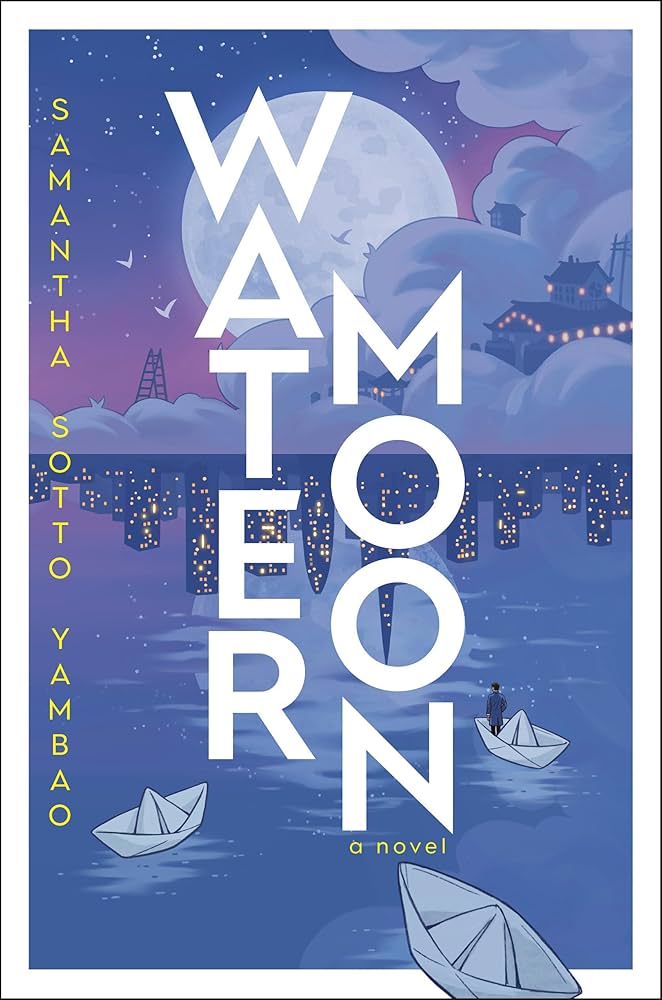Samantha Sotto Yamabo, author of well-known novels, “The Beginning of Always” and “A Dream of Trees,” published her fifth and most anticipated novel, “Water Moon,” in January. Upon reading the enticing synopsis, it proved clear that “Water Moon’s” magical prose and profound storytelling aimed to enchant its readers, delivering an exciting and whimsical adventure. However, after diving into the novel myself, I struggled to overcome the lack of depth and structure this book offers to fully enjoy the journey.
Set in the backstreets of Tokyo, Japan, “Water Moon” follows Hana Ishikawa, the new owner of a magical pawnshop. Hidden behind a ramen restaurant, the pawnshop only finds business in those lost, not directionally, but in life. Rather than pawning tangible objects, customers trade their deepest regrets in exchange for the ability to forget and move on.
However, the pragmatic plot transforms into a mystery-seeking adventure once Hana walks in on a destroyed pawnshop and realizes her beloved father– Ishikawa Toshio– has disappeared. Hana’s adventure resembles a dream— but to me, it lacks all the substance needed to turn that dream into a meaningful story.
Labeled as a fantasy and magical realism novel, the storyline consistently includes all of elements of these genres. The creativity Yambo puts into every concept goes above and beyond, whether characters jump into puddles to travel to a parallel universe or go to sleep at night only to wake up on a bridge connecting to a dreamland. This world Samantha Yambao has built is endless.
But that’s just it— Yambao used so much space explaining the concepts that as soon as we begin to understand the idea of one magical element, we are already being introduced to the next, and so on. Although it is well-detailed, it feels as though these elements are simply thrown into the storyline for the sake of including them, lacking any sort of ties that connect one to the next.
On a more positive note, Yambao does keep the character list to a minimum, sparing readers of any added confusion amongst the immense fantastical elements.
Written in the third person, we follow Hana and her male love interest, Keishin, as they take on each adventure together. Keishin, a citizen of the “real world,” stumbles into the disheveled pawnshop just as Hana discovers her father’s disappearance. From that moment on, there is an instant love connection between the two.
Normally, I wouldn’t feel opposed to this “insta-love"; however, the stilted dialogue encompassing the entire novel lacks depth, making their love connection feel shallow as well. If you were to pull a quote from each character, mix them up, and try to guess who said what, any differentiation would be impossible. With indistinguishable characters compared to the overly abundant world-building, the novel feels unbalanced, ultimately working against the story.
While the formation of the novel lacks in more ways than one, the message of “Water Moon” enticed me to pick up the book in the first place, and ultimately kept me reading through the end.
As Hana dives into the ideology surrounding her pawnshop and the world she lives in, Yambao highlights the ideology of choices. In Hana’s world, lives are predetermined for each citizen, publicly displayed through a map of ink on their skin. In our world, we hold the luxury of choices. No matter what choice we make, whether significant or inconsequential, we have the privilege of deciding. When you live in a world where that privilege is stripped of you, life is somewhat mundane and hopeless.
After 370 pages, I wouldn’t say I hated this book, nor would I say I loved it. It depends on what you’re looking for. “Water Moon” will find its audience in the escapists and the dreamers, but for readers like myself, I found that the structural errors outweighed the overall message of the novel.
Shallow Dialogue and Structure Disrupts “Water Moon’s” Stunning Message
Barnes & Noble
“Water Moon” emerges into the ever-evolving world of literature, taking each reader on a whimsical adventure.


